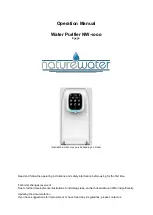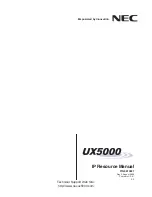
11
Basic Mounting Procedures
The solar collector in your solar system can
be mounted in either a vertical or horizontal
orientation on the roof (See Figure 4). Although
the collector is protected from freeze conditions by
the glycol HTF and does not normally need to be
drained, it is still important to slope the collectors
just slightly to allow for complete drainage if
necessary. The recommended slope is 1/4" per foot
of horizontal run.
To ensure proper water drainage from the glazing,
the collectors must maintain a minimum angle
from horizontal of at least 10°. Never mount the
collector directly or parallel to a flat roof surface.
Use "Solar Strut" tilt mount kits to rack the
collectors to the proper angle.
The collector should be mounted as close to the
storage tank as possible to minimize heat loss
in the piping runs. If the home has attic access,
mounting the collectors near the roof peak
provides for additional attic workspace.
The solar collector should be mounted on the roof
in accordance with these general principles:
The most important structural
consideration is to securely anchor the
solar collector and the mounting hardware
to the structural members of the roof with
stainless steel hanger or lag bolts. The
solar collector must be attached to the
mounting hardware as detailed in Figures
5–10. (Note: The drawings in this manual
detail mounting hardware for the series
collector.)
The collector must be raised from the roof
surface to allow for rainwater and debris
to pass under the collectors and for proper
ventilation of the roofing material. There
should be at least 3" of clearance between
the roof surface and the bottom of the
solar collectors.
In selecting mounting hardware and
fasteners it is extremely important to
avoid galvanic corrosion resulting from
the direct contact of incompatible metals.
Use of anodized aluminum mounting
hardware and stainless steel lag or hanger
bolts, lock washers and round washers
is recommended. In climates subject to
severe winters or high humidity use of
galvanized fasteners is prohibited.
Preserving the integrity of the roof
membrane is the most important roofing
consideration. Ensure that all roof
penetrations required to plumb and
mount the solar collector are properly
flashed and sealed in accordance with
standard roofing practices.
If the region is subject to hurricane
conditions, additional steps may be
required to secure the collector and
mounting hardware to the structural
members. In certain areas of the country,
local building codes may require
collector wind load testing or prescribe
specific mounting procedures. Consult
your local building department.
Figure 4 - Collector Orientation












































